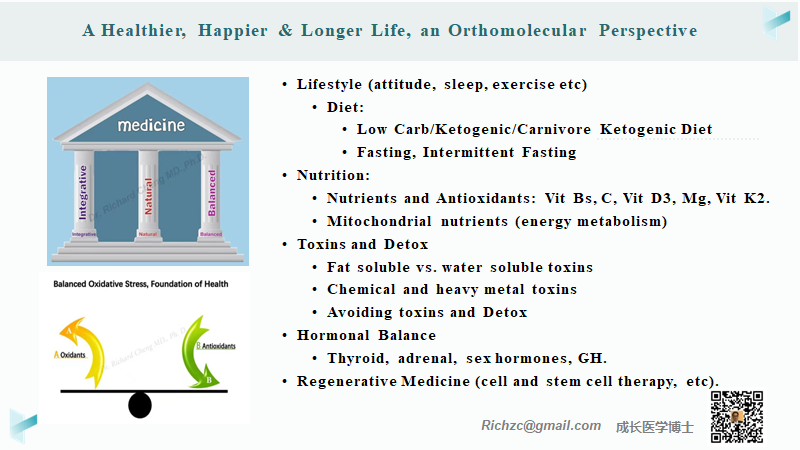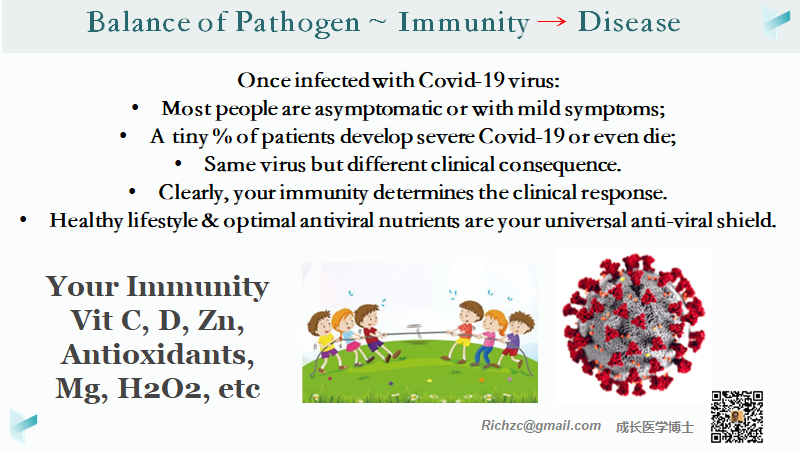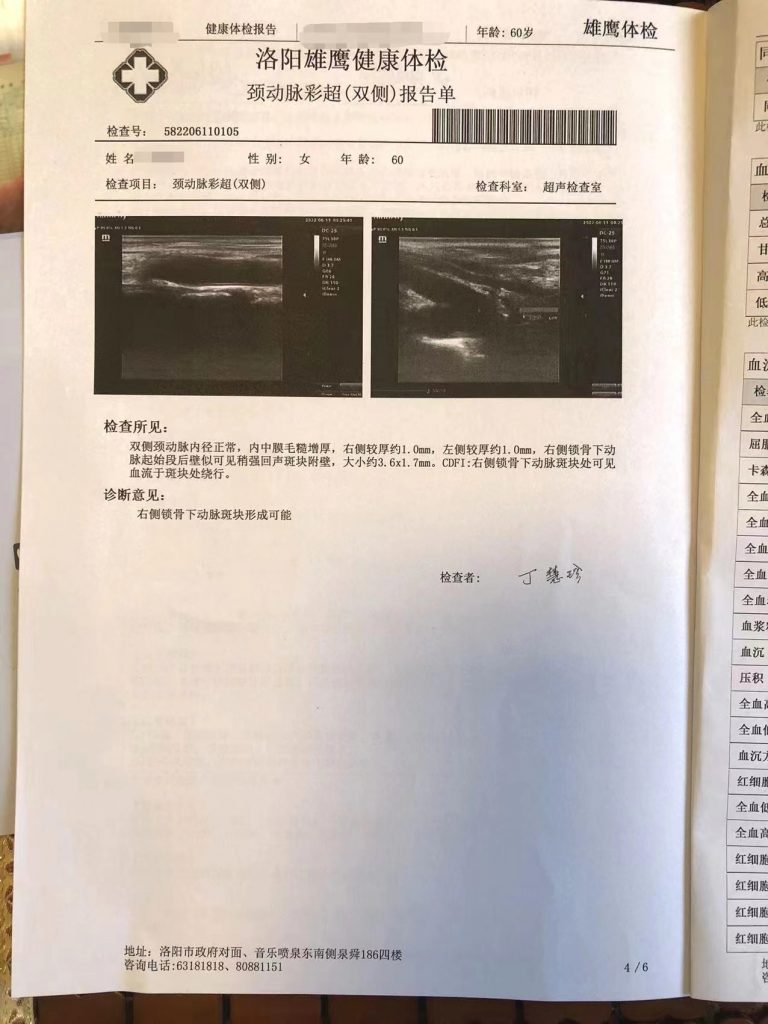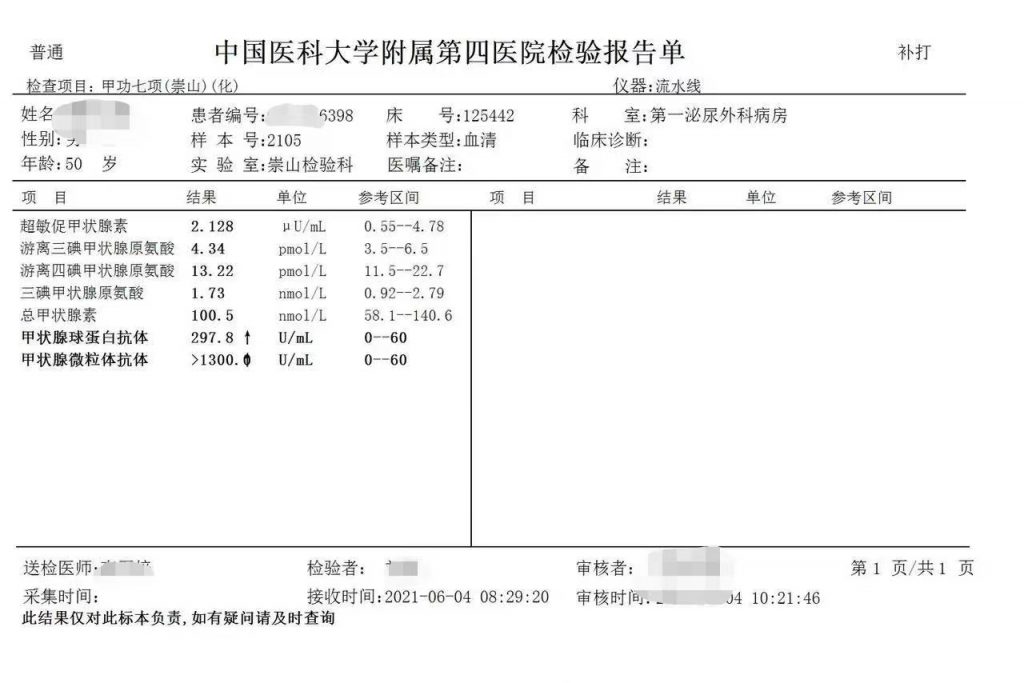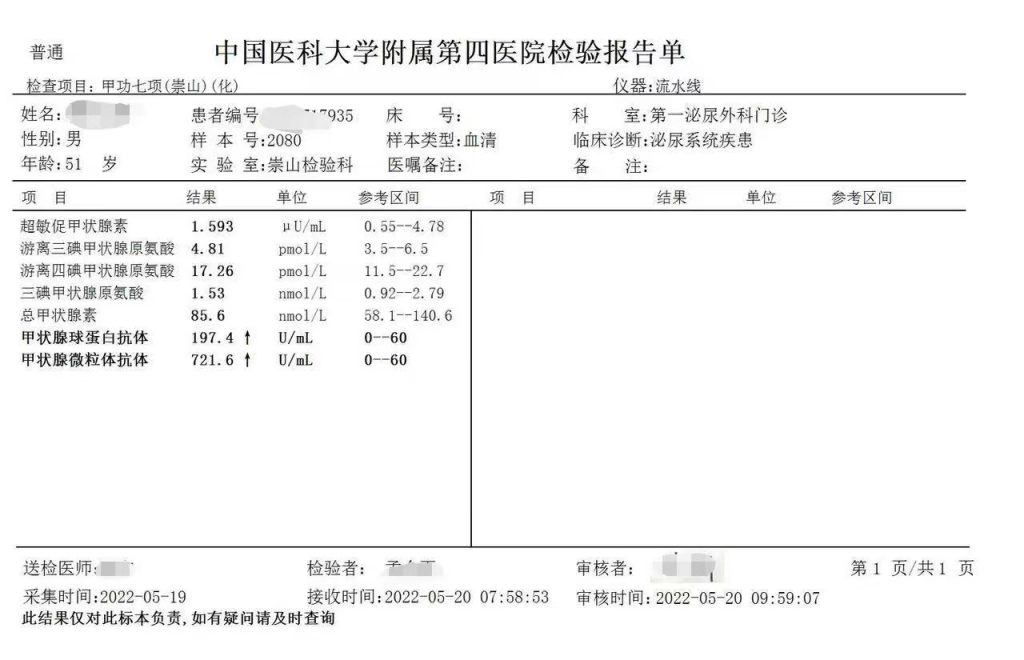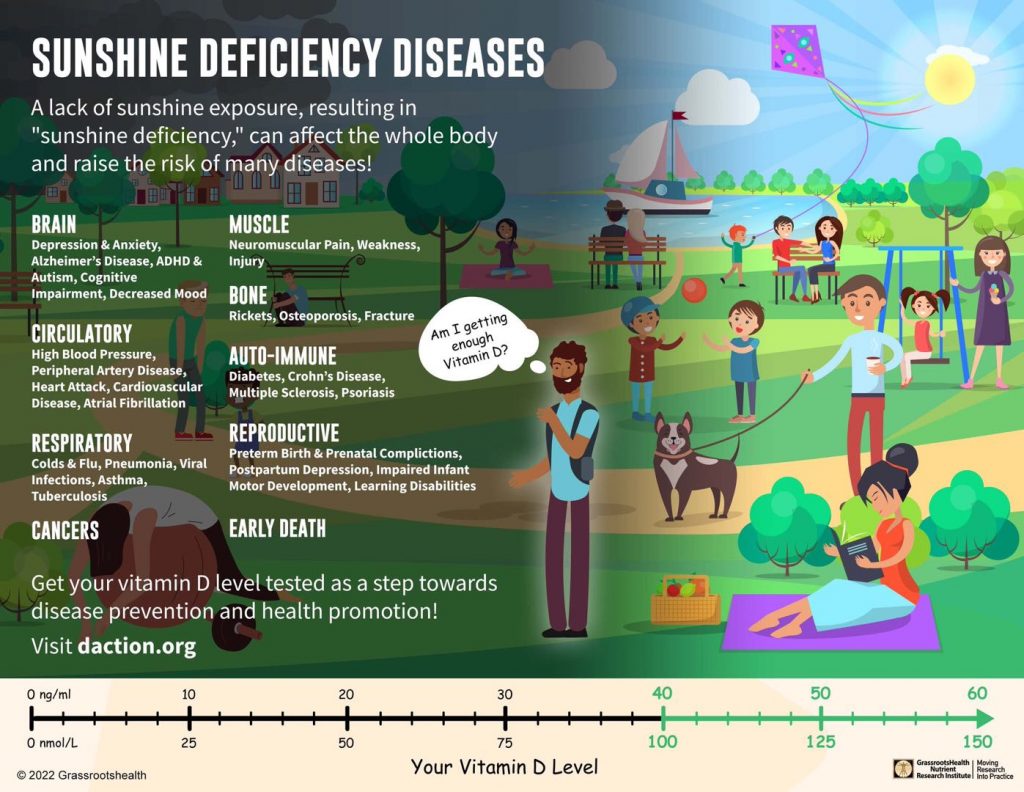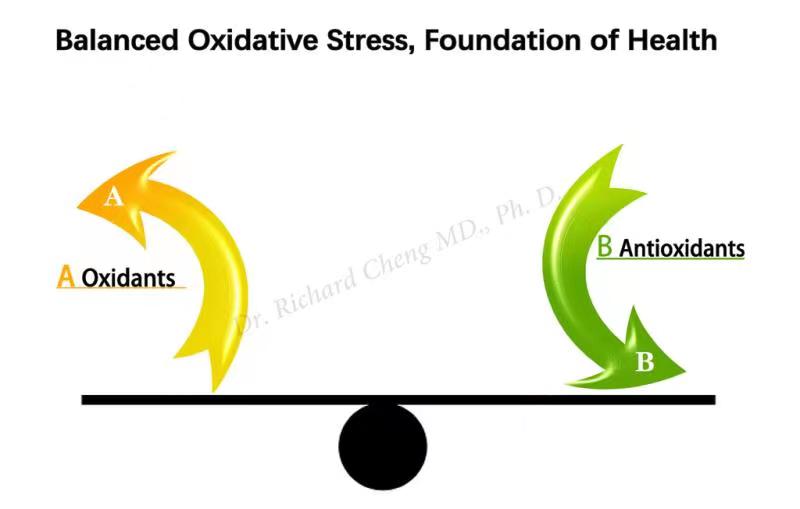by Richard Z. Cheng, M.D., Ph.D., Thomas E. Levy, M.D., J.D.
Summary: Osteoporosis, like most other disease, is caused by not just Vitamin D deficiency, but by many other factors. But the central dogma has been promoting just prescription drugs and calcium supplements. This strategy sounds simple and straight, unfortunately not only they don’t work, they may even be harmful to you. There is a rich body of data in the literature that show lifestyle, nutrition, toxin and hormonal balance (or lack thereof) have an impact on bone health and osteoporosis. A brief summary of these research data is presented here. The practical management of osteoporosis, and other chronic diseases, should incorporate these aspects for optimal results.
The recent issue of NEJM published an article showing Vit D supplementation does not improve osteoporosis. 1 Forbes magazine immediately jumped the gun: Stop Taking Vitamin D Already! 2
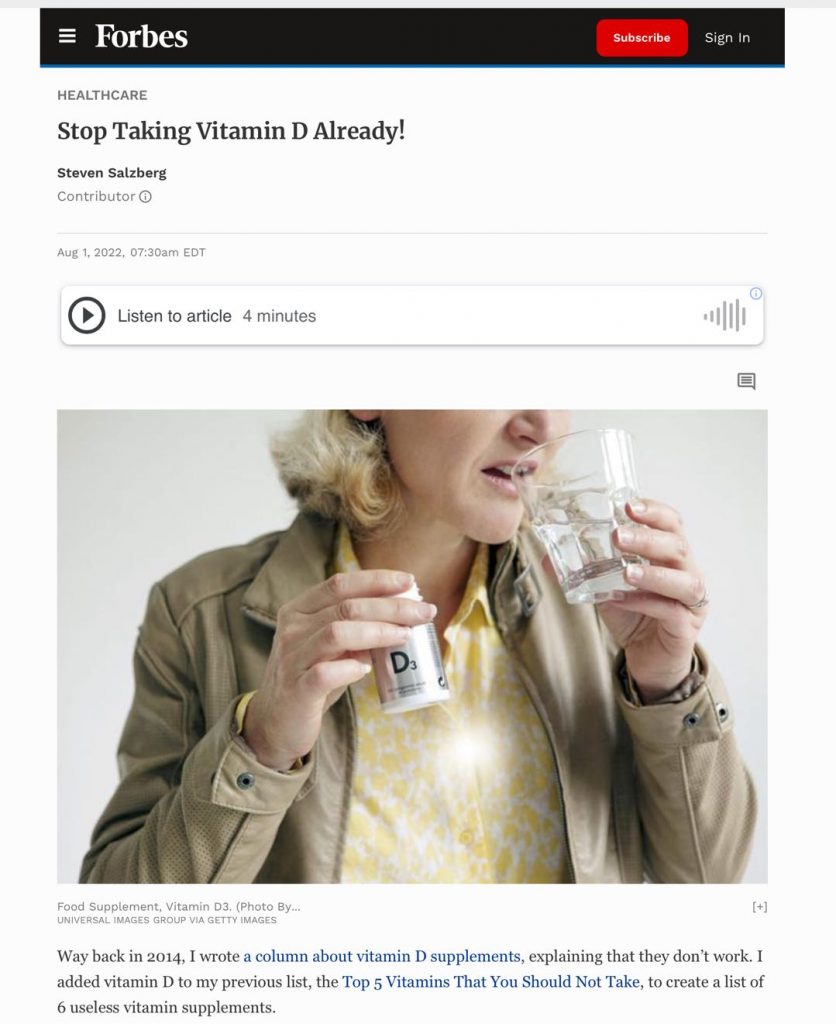 Vitamin D is more than just a vitamin, it is more like a hormone with pleiotropic effects on human, including immune boosting effects to fight against Covid-19. Declaring to stop taking Vit D based on just one negative study is not only unscientific, it’s against common sense. (I will not discuss the study design issues, as Dr. Bill Grant will offer his critique of NEJM’s poor study design soon). There have been many clinical studies on Vit D3 and Covid-19 in the last 2 years, including a special collection of Micronutrients for Viral Infections – Reference Bibliography by International Society for Orthomolecular Medicine, 3 and several such papers on Orthomolecular Medicine News Service including a recent review by Dr. Bill Grant. 4 Have the author and editor of the Forbes article either not been updated on the Vit D research or is there something else?
Vitamin D is more than just a vitamin, it is more like a hormone with pleiotropic effects on human, including immune boosting effects to fight against Covid-19. Declaring to stop taking Vit D based on just one negative study is not only unscientific, it’s against common sense. (I will not discuss the study design issues, as Dr. Bill Grant will offer his critique of NEJM’s poor study design soon). There have been many clinical studies on Vit D3 and Covid-19 in the last 2 years, including a special collection of Micronutrients for Viral Infections – Reference Bibliography by International Society for Orthomolecular Medicine, 3 and several such papers on Orthomolecular Medicine News Service including a recent review by Dr. Bill Grant. 4 Have the author and editor of the Forbes article either not been updated on the Vit D research or is there something else?
Prescription drugs and calcium supplements have no significant benefits on osteoporosis.
Earlier this year, a meta-analysis published on JAMA found that bisphosphonates, a major class of prescription osteoporosis drugs offer very few benefits to osteoporotic patients. 5 Another meta-analysis on JAMA showed calcium supplements do not offer significant help to osteoporosis. 6
Calcium supplements increase your risks of cardiovascular diseases and cancer.
To make matters worse, calcium supplements not only do not improve your health, but may actually increase your risks of cardiovascular diseases and cancer, as reported on a recent study. 7
There are actually many studies in the literature demonstrating the increased risks of calcium supplements, as elegantly summarized by Thomas Levy, M.D., J.D.8 9
Prescription drugs and calcium supplements are not helpful and may be even harmful. So, are osteoporosis patients doomed?
Not at all. There is a rich body of evidence in the medical literature showing that osteoporosis is a multifactorial disease, and a healthy lifestyle, toxin overload (hence detoxification), optimal nutrition and hormonal balance are effective in improving not only osteoporosis but your overall health. I’ll summarize these findings below. 8
Highlights of some of the relevant research:
- Vitamin C and Osteoporosis:
- Increased oxidative stress (= inflammatory response) in the bone is accompanied by an increase in C-reactive protein (CRP). CRP can accurately predict fracture risk in older women with osteoporosis.10
- Increased other inflammatory markers are also closely associated with increased fracture risk. 11
- High-dose vitamin C can significantly reduce CRP and many other markers of inflammation. 12
- Vitamin C stimulates the development of osteoblasts.13 14
- Vitamin C is necessary for the synthesis of progenin (class III), which is required for the growth of osteoblasts. 15
- Dietary vitamin C, which is negligible compared to any form of vitamin C supplementation, does not reduce fracture risk.16
- Elderly osteoporosis patients with a history of fractures had significantly lower levels of vitamin C than those without a history of fractures.17
- Supplementation with vitamin C, but not calcium, significantly increased bone mineral density in all bones.18
- In ovariectomized mice, vitamin C prevents bone loss.19Vitamin C significantly accelerates fracture healing (PMID: 11510911).
- Vitamin C significantly improves the strength of healed fractures.20
- Magnesium deficiency and osteoporosis:
- Magnesium is a natural calcium antagonist.21 22
- Magnesium dissolves calcium deposits in soft tissues.23
- Magnesium deficiency leads to an increase in intracellular calcium. 24
- Magnesium increases bone density and reduces fractures.25
- Magnesium reduces all-cause mortality.26 27
- Usual supplemental doses have no toxic side effects.
- Vitamin K deficiency and osteoporosis:
- Inhibits ectopic calcification by activating proteases such as osteocalcin and matrix Gla proteins.28
- Helps dissolve deposited calcium.29
- Neutralizes warfarin (warfarin can cause ectopic calcification). 30
- Reduced fracture risk. 31
- Improves bone quality. 32
- Reduces cardiac and all-cause mortality. 33
- At any dose tried, there was no apparent toxicity. 34
- Vitamin D deficiency and osteoporosis
- A normal level of vitamin D ensures that the body gets enough calcium from the diet.
- The role of vitamin D goes far beyond the metabolism of bone and calcium.
- Vitamin D regulates about 2000 genes. 35
- Deficiency of vitamin D leads to osteoporosis. 36
- Too much vitamin D exacerbates osteoporosis. 37
- During bone growth and development, it plays an important role in bone density. 38
- Reduced all-cause mortality at therapeutic doses of vitamin D. 39 40
- Estrogens and Osteoporosis:
- Reduce coronary calcium deposition. 41
- The higher the E2, the lower the CAC score. 42
- Inhibits a calcification-promoting protease. 43
- Estrogen deficiency leads to an increase in cytokines that promote inflammation. 44
- Reduction of fracture risk in patients with osteoporosis. 45
- Estrogen deficiency increases all-cause mortality. 46
- Estrogen deficiency promotes metabolic syndrome. 47
- Androgens and Osteoporosis:
- Testosterone deficiency is a well-established fracture risk factor. 48
- With calcium channel blocking function. 49
- Prostate cancer patients often have low testosterone levels (PMID: 22068548).
- Testosterone levels are inversely proportional to coronary calcium index. 50
- Testosterone deficiency increases all-cause mortality. 51 52
- Thyroid hormones and Osteoporosis:
- Thyroid hormones have a significant effect on the metabolism of cells throughout the body. 53
- Early skeletal development and the highest bone mass (Peak Bone Mass) have essential roles. 54
- Both high and low thyroid function increase fracture risk. 55
- TSH has a direct (non-thyroid-related) bone-protecting function. 56 57
- Both too high and too low thyroxine independently increased all-cause mortality. This includes subclinical hypothyroidism and subclinical hyperthyroidism. 58 59
- Thyroid hormones status should be a part of routine medical examination, and should be checked regularly (at least annually), especially in the elderly population.
- Essential Fatty Acids (EFA) and Osteoporosis:
- Some EFAs have calcium channel blocking capabilities. 60 61
- Numerous EFAs have been shown to protect bone mineral density. 62 63
- Blood EFA levels are inversely related to all-cause mortality. 64
- Not toxic, may cause gastrointestinal discomfort in large quantities.
- Calcium Supplements Are Not Only Unhelpful, They Are Harmful: Chronic Hypercalcemia Is Common in Adults, and Calcium Supplements Promote Coronary Calcium
- A more recent study (2017) showed that calcium supplementation has no effect on osteoporosis. 6
- One-third of Americans over the age of 45 have CT-detected arterial calcification. 65
- Coronary heart disease is positively associated with osteoporosis. 66
- Aortic calcification is positively associated with osteoporosis (PMID: 16704561). 67
- Calcium supplements promote coronary calcium deposition.
- A recent 10-year large study of 5448 subjects in the United States found that calcium supplementation was 22% more likely to be positive for CAC (coronary calcium index) than those who did not. CAC has been generally recognized as a reliable predictor of atherosclerotic plaque burden, coronary heart disease, and all-cause mortality. 68 69 70
- A recent (2022.6) meta-analysis once again showed that calcium supplements increase the risk of cardiovascular disease. 7
- Significant calcifications outside the bones: indicating calcium excess
- Ectopic calcifications are very common in cancer.
- Using the latest MRI, 22 of 23 prostate patients were found to have prostate calcification. 71
- Excessive intracellular calcium is associated with cancer:
- The relationship between intracellular calcium and cancer is well established. Higher intracellular calcium concentration increases cancer cell growth and metastasis. 72 73 74
- Conversely, a drop in intracellular calcium reduces cancer cell metastasis. 75
- Women with the highest scores on a bone density test had an increased risk of breast cancer. 76
- Calcifications are usually seen on mammography in patients with breast cancer. 77
- Calcium and calcium channel blockers (CCBs. Also known as calcium ion antagonists, which have the effect of reducing intracellular calcium ions).
- Calcium channels are proteins on the cell membrane that selectively allow calcium to enter and leave the cell.
- CCBs were originally used to treat high blood pressure (which has a vasodilatory function), but are now used for a variety of diseases.
- The only serious side effect of CCBs is excessive calcium antagonism, resulting in vasoconstriction disorders and hypotension.
- The hypotensive and other therapeutic effects of CCBs can only be demonstrated on the basis of increased intracellular calcium. Although different CCBs have other different effects, their main function is to block calcium channels. Therefore, we can conclude that any disease for which CCBs are effective is due to the increased intracellular calcium ion concentration affected by the disease.
- In addition to high blood pressure, CCBs are also effective against the following conditions:
- Coronary spasm (PMID: 21389642);
- Angina pectoris (PMID: 23016717):
- Anti-atherosclerotic (PMID: 22653165);
- Pulmonary hypertension (PMID: 20543192);
- Raynaud’s phenomenon (PMID: 21704799);
- Acute Brain Injury (PMID: 22854593).
- Epilepsy (PMID: 19303743);
- Chemotherapy-induced peripheral neuritis (PMID: 23206755):
- Alzheimer’s Disease (PMID: 21925266):
- Parkinson’s disease (PMID: 22387374):
- Osteoporosis (PMID: 21881574):
- CCBs reduce all-cause mortality (PMID: 10323641; 10922432; 15716708; 19451836).
- Further evidence that increased intracellular calcium leads to increased intracellular oxidative stress (toxicity):
- CCBs can prevent methylmercury-induced nerve damage in rats (PMID: 8882354);
- The use of CCBs is inversely related to the occurrence of prostate cancer (PMID: 23280547);
- CCBs reduce intracytoplasmic iron accumulation and further increase the increase in intracellular oxidative stress. The accumulation and increase of intracellular iron are also important factors in the carcinogenesis of cells (PMID: 21860702).
To put these altogether, we recommend an integrative management of osteoporosis to include at least the following:
- Healthy lifestyle
- Sufficient sleep, exercise, outdoor activities and relaxation
- Nutrition rich anti-inflammatory healthy diets to include low carbohydrates, sufficient proteins and healthy fats; minimize processed foods and synthetic food additives, agricultural chemicals, antibiotics and hormones, and other environmental pollutant.
- Nutrition: In addition to what’s described above, macro- and micro-nutrients play a significant roles in the prevention and reversal of bone health and osteoporosis, as reviewed in 78. Broad spectrum optimal vitamins and micronutrients, esp. vitamin C, D3, K2, and magnesium, as these nutrients require each other for optimal effects, as described in 79.
- Toxins and detox. Environmental toxins are major category of root causes to our health.
- Hormonal balance. Monitoring the status of the thyroid, adrenal and sex hormones and balance if indicated, is another under-recognized area in medicine today.
References:
- LeBoff, M. & et al. Supplemental Vitamin D and Incident Fractures in Midlife and Older Adults | NEJM. https://www.nejm.org/doi/full/10.1056/NEJMoa2202106.
- Salzberg, S. Stop Taking Vitamin D Already! Forbes https://www.forbes.com/sites/stevensalzberg/2022/08/01/stop-taking-vitamin-d-already/.
- Medicine, C. S. for O. Micronutrients for Viral Infections – Reference Bibliography. ISOM https://isom.ca/micronutrients-viral-infections/.
- Grant, W. B. Vitamin D’s Role in Reducing Risk of SARS-CoV-2 and COVID-19 Incidence, Severity, and Death. Nutrients 14, 183 (2021).
- Deardorff, W. J., Cenzer, I., Nguyen, B. & Lee, S. J. Time to Benefit of Bisphosphonate Therapy for the Prevention of Fractures Among Postmenopausal Women With Osteoporosis: A Meta-analysis of Randomized Clinical Trials. JAMA Intern Med 182, 33–41 (2022).
- Zhao, J.-G., Zeng, X.-T., Wang, J. & Liu, L. Association Between Calcium or Vitamin D Supplementation and Fracture Incidence in Community-Dwelling Older Adults: A Systematic Review and Meta-analysis. JAMA 318, 2466–2482 (2017).
- Park, J.-M. et al. Calcium Supplementation, Risk of Cardiovascular Diseases, and Mortality: A Real-World Study of the Korean National Health Insurance Service Data. Nutrients 14, 2538 (2022).
- Levy, T. Death By Calcium (New, First Edition): Levy, Thomas E., MD, JD: 9780615889603: Amazon.com: Books. https://www.amazon.com/Death-Calcium-First-Thomas-Levy/dp/0615889603/ref=sr_1_1?keywords=death+by+calcium+by+dr+thomas+levy&qid=1659629175&sprefix=death+by+calcium%2Caps%2C207&sr=8-1.
- Levy, T. & 成长. 隐形杀手—补钙剂(中文版): 补钙无助于骨质疏松, 反而促进血管硬化, 心脏病(中文版)。 (Kindle Publisher, 2017).
- Nakamura, K. et al. C-reactive protein predicts incident fracture in community-dwelling elderly Japanese women: the Muramatsu study. Osteoporos Int 22, 2145–2150 (2011).
- Lacativa, P. G. S. & Farias, M. L. F. de. Osteoporosis and inflammation. Arq Bras Endocrinol Metabol 54, 123–132 (2010).
- Mikirova, N., Casciari, J., Rogers, A. & Taylor, P. Effect of high-dose intravenous vitamin C on inflammation in cancer patients. J Transl Med 10, 189 (2012).
- Carinci, F. et al. Effect of Vitamin C on pre-osteoblast gene expression. Arch Oral Biol 50, 481–496 (2005).
- Choi, K.-M. et al. Effect of ascorbic acid on bone marrow-derived mesenchymal stem cell proliferation and differentiation. J Biosci Bioeng 105, 586–594 (2008).
- Maehata, Y. et al. Type III collagen is essential for growth acceleration of human osteoblastic cells by ascorbic acid 2-phosphate, a long-acting vitamin C derivative. Matrix Biol 26, 371–381 (2007).
- Sahni, S. et al. Protective effect of total and supplemental vitamin C intake on the risk of hip fracture–a 17-year follow-up from the Framingham Osteoporosis Study. Osteoporos Int 20, 1853–1861 (2009).
- Martínez-Ramírez, M. J. et al. Vitamin C, vitamin B12, folate and the risk of osteoporotic fractures. A case-control study. Int J Vitam Nutr Res 77, 359–368 (2007).
- Morton, D. J., Barrett-Connor, E. L. & Schneider, D. L. Vitamin C supplement use and bone mineral density in postmenopausal women. J Bone Miner Res 16, 135–140 (2001).
- Zhu, L.-L. et al. Vitamin C prevents hypogonadal bone loss. PLoS One 7, e47058 (2012).
- Alcantara-Martos, T., Delgado-Martinez, A. D., Vega, M. V., Carrascal, M. T. & Munuera-Martinez, L. Effect of vitamin C on fracture healing in elderly Osteogenic Disorder Shionogi rats. J Bone Joint Surg Br 89, 402–407 (2007).
- Fawcett, W. J., Haxby, E. J. & Male, D. A. Magnesium: physiology and pharmacology. Br J Anaesth 83, 302–320 (1999).
- Anghileri, L. J. Magnesium, calcium and cancer. Magnes Res 22, 247–255 (2009).
- Steidl, L. & Ditmar, R. Soft tissue calcification treated with local and oral magnesium therapy. Magnes Res 3, 113–119 (1990).
- Fox, C., Ramsoomair, D. & Carter, C. Magnesium: its proven and potential clinical significance. South Med J 94, 1195–1201 (2001).
- Ryder, K. M. et al. Magnesium intake from food and supplements is associated with bone mineral density in healthy older white subjects. J Am Geriatr Soc 53, 1875–1880 (2005).
- Woods, K. L. & Fletcher, S. Long-term outcome after intravenous magnesium sulphate in suspected acute myocardial infarction: the second Leicester Intravenous Magnesium Intervention Trial (LIMIT-2). Lancet 343, 816–819 (1994).
- Shechter, M., Hod, H., Rabinowitz, B., Boyko, V. & Chouraqui, P. Long-term outcome of intravenous magnesium therapy in thrombolysis-ineligible acute myocardial infarction patients. Cardiology 99, 205–210 (2003).
- Theuwissen, E., Smit, E. & Vermeer, C. The role of vitamin K in soft-tissue calcification. Adv Nutr 3, 166–173 (2012).
- Schurgers, L. J. et al. Regression of warfarin-induced medial elastocalcinosis by high intake of vitamin K in rats. Blood 109, 2823–2831 (2007).
- Price, P. A., Faus, S. A. & Williamson, M. K. Warfarin causes rapid calcification of the elastic lamellae in rat arteries and heart valves. Arterioscler Thromb Vasc Biol 18, 1400–1407 (1998).
- Shiraki, M., Shiraki, Y., Aoki, C. & Miura, M. Vitamin K2 (menatetrenone) effectively prevents fractures and sustains lumbar bone mineral density in osteoporosis. J Bone Miner Res 15, 515–521 (2000).
- Saito, M. [Effect of vitamin K on bone material properties]. Clin Calcium 19, 1797–1804 (2009).
- Geleijnse, J. M. et al. Dietary intake of menaquinone is associated with a reduced risk of coronary heart disease: the Rotterdam Study. J Nutr 134, 3100–3105 (2004).
- Pucaj, K., Rasmussen, H., Møller, M. & Preston, T. Safety and toxicological evaluation of a synthetic vitamin K2, menaquinone-7. Toxicol Mech Methods 21, 520–532 (2011).
- Wacker, M. & Holick, M. F. Vitamin D – effects on skeletal and extraskeletal health and the need for supplementation. Nutrients 5, 111–148 (2013).
- Bolland, M. J. et al. Vitamin D insufficiency and health outcomes over 5 y in older women. Am J Clin Nutr 91, 82–89 (2010).
- Masterjohn, C. Vitamin D toxicity redefined: vitamin K and the molecular mechanism. Med Hypotheses 68, 1026–1034 (2007).
- Pekkinen, M., Viljakainen, H., Saarnio, E., Lamberg-Allardt, C. & Mäkitie, O. Vitamin D is a major determinant of bone mineral density at school age. PLoS One 7, e40090 (2012).
- Semba, R. D. et al. Relationship of 25-hydroxyvitamin D with all-cause and cardiovascular disease mortality in older community-dwelling adults. Eur J Clin Nutr 64, 203–209 (2010).
- Schöttker, B. et al. Strong associations of 25-hydroxyvitamin D concentrations with all-cause, cardiovascular, cancer, and respiratory disease mortality in a large cohort study. Am J Clin Nutr 97, 782–793 (2013).
- Weinberg, N. et al. Physical activity, hormone replacement therapy, and the presence of coronary calcium in midlife women. Women Health 52, 423–436 (2012).
- Jeon, G.-H. et al. Association between serum estradiol level and coronary artery calcification in postmenopausal women. Menopause 17, 902–907 (2010).
- Osako, M. K. et al. Estrogen inhibits vascular calcification via vascular RANKL system: common mechanism of osteoporosis and vascular calcification. Circ Res 107, 466–475 (2010).
- Das, U. N. Nitric oxide as the mediator of the antiosteoporotic actions of estrogen, statins, and essential fatty acids. Exp Biol Med (Maywood) 227, 88–93 (2002).
- de Villiers, T. J. & Stevenson, J. C. The WHI: the effect of hormone replacement therapy on fracture prevention. Climacteric 15, 263–266 (2012).
- de Padua Mansur, A. et al. Long-term prospective study of the influence of estrone levels on events in postmenopausal women with or at high risk for coronary artery disease. ScientificWorldJournal 2012, 363595 (2012).
- Mauvais-Jarvis, F., Clegg, D. J. & Hevener, A. L. The role of estrogens in control of energy balance and glucose homeostasis. Endocr Rev 34, 309–338 (2013).
- Torremadé-Barreda, J. et al. [Testosterone-deficiency as a risk factor for hip fracture in eldery men]. Actas Urol Esp 37, 142–146 (2013).
- Oloyo, A. K., Sofola, O. A., Nair, R. R., Harikrishnan, V. S. & Fernandez, A. C. Testosterone relaxes abdominal aorta in male Sprague-Dawley rats by opening potassium (K(+)) channel and blockade of calcium (Ca(2+)) channel. Pathophysiology 18, 247–253 (2011).
- Mearini, L. et al. Low serum testosterone levels are predictive of prostate cancer. World J Urol 31, 247–252 (2013).
- Fukai, S. et al. Plasma sex hormone levels and mortality in disabled older men and women. Geriatr Gerontol Int 11, 196–203 (2011).
- Grossmann, M. et al. Low testosterone levels as an independent predictor of mortality in men with chronic liver disease. Clin Endocrinol (Oxf) 77, 323–328 (2012).
- Boelaert, K. & Franklyn, J. A. Thyroid hormone in health and disease. J Endocrinol 187, 1–15 (2005).
- Williams, G. R. Actions of thyroid hormones in bone. Endokrynol Pol 60, 380–388 (2009).
- Wojcicka, A., Bassett, J. H. D. & Williams, G. R. Mechanisms of action of thyroid hormones in the skeleton. Biochim Biophys Acta 1830, 3979–3986 (2013).
- Sun, L. et al. Genetic confirmation for a central role for TNFα in the direct action of thyroid stimulating hormone on the skeleton. Proc Natl Acad Sci U S A 110, 9891–9896 (2013).
- Ma, R., Morshed, S., Latif, R., Zaidi, M. & Davies, T. F. The influence of thyroid-stimulating hormone and thyroid-stimulating hormone receptor antibodies on osteoclastogenesis. Thyroid 21, 897–906 (2011).
- Tseng, F.-Y. et al. Subclinical hypothyroidism is associated with increased risk for all-cause and cardiovascular mortality in adults. J Am Coll Cardiol 60, 730–737 (2012).
- Ceresini, G. et al. Thyroid status and 6-year mortality in elderly people living in a mildly iodine-deficient area: the aging in the Chianti Area Study. J Am Geriatr Soc 61, 868–874 (2013).
- Ye, S., Tan, L., Ma, J., Shi, Q. & Li, J. Polyunsaturated docosahexaenoic acid suppresses oxidative stress induced endothelial cell calcium influx by altering lipid composition in membrane caveolar rafts. Prostaglandins Leukot Essent Fatty Acids 83, 37–43 (2010).
- Pages, N. et al. Brain protection by rapeseed oil in magnesium-deficient mice. Prostaglandins Leukot Essent Fatty Acids 85, 53–60 (2011).
- Farina, E. K. et al. Plasma phosphatidylcholine concentrations of polyunsaturated fatty acids are differentially associated with hip bone mineral density and hip fracture in older adults: the Framingham Osteoporosis Study. J Bone Miner Res 27, 1222–1230 (2012).
- Moon, H.-J., Kim, T.-H., Byun, D.-W. & Park, Y. Positive correlation between erythrocyte levels of n-3 polyunsaturated fatty acids and bone mass in postmenopausal Korean women with osteoporosis. Ann Nutr Metab 60, 146–153 (2012).
- Pottala, J. V., Garg, S., Cohen, B. E., Whooley, M. A. & Harris, W. S. Blood eicosapentaenoic and docosahexaenoic acids predict all-cause mortality in patients with stable coronary heart disease: the Heart and Soul study. Circ Cardiovasc Qual Outcomes 3, 406–412 (2010).
- Guzman, R. J. Clinical, cellular, and molecular aspects of arterial calcification. J Vasc Surg 45 Suppl A, A57-63 (2007).
- von der Recke, P., Hansen, M. A. & Hassager, C. The association between low bone mass at the menopause and cardiovascular mortality. Am. J. Med. 106, 273–278 (1999).
- Bagger, Y. Z. et al. Radiographic measure of aorta calcification is a site-specific predictor of bone loss and fracture risk at the hip. J. Intern. Med. 259, 598–605 (2006).
- Anderson, J. J. B. et al. Calcium Intake From Diet and Supplements and the Risk of Coronary Artery Calcification and its Progression Among Older Adults: 10-Year Follow-up of the Multi-Ethnic Study of Atherosclerosis (MESA). J Am Heart Assoc 5, e003815 (2016).
- Jacobs, P. C. et al. Coronary artery calcium can predict all-cause mortality and cardiovascular events on low-dose CT screening for lung cancer. AJR Am J Roentgenol 198, 505–511 (2012).
- Kiramijyan, S. et al. Impact of coronary artery calcium progression and statin therapy on clinical outcome in subjects with and without diabetes mellitus. Am J Cardiol 111, 356–361 (2013).
- Bai, Y. et al. Susceptibility weighted imaging: a new tool in the diagnosis of prostate cancer and detection of prostatic calcification. PLoS One 8, e53237 (2013).
- Gudermann, T. & Roelle, S. Calcium-dependent growth regulation of small cell lung cancer cells by neuropeptides. Endocr Relat Cancer 13, 1069–1084 (2006).
- Kaufmann, R. & Hollenberg, M. D. Proteinase-activated receptors (PARs) and calcium signaling in cancer. Adv Exp Med Biol 740, 979–1000 (2012).
- Ryu, S. et al. Suppression of miRNA-708 by polycomb group promotes metastases by calcium-induced cell migration. Cancer Cell 23, 63–76 (2013).
- Lin, Q. et al. Reactive astrocytes protect melanoma cells from chemotherapy by sequestering intracellular calcium through gap junction communication channels. Neoplasia 12, 748–754 (2010).
- Zhang, Y. et al. Bone mass and the risk of breast cancer among postmenopausal women. N Engl J Med 336, 611–617 (1997).
- Holmberg, L. et al. Mammography casting-type calcification and risk of local recurrence in DCIS: analyses from a randomised study. Br J Cancer 108, 812–819 (2013).
- Martiniakova, M. et al. The Role of Macronutrients, Micronutrients and Flavonoid Polyphenols in the Prevention and Treatment of Osteoporosis. Nutrients 14, 523 (2022).
- Cheng, R. Z. A Hallmark of Covid-19: Cytokine Storm/Oxidative Stress and its Integrative Mechanism. http://orthomolecular.org/resources/omns/v18n03.shtml (2022).

